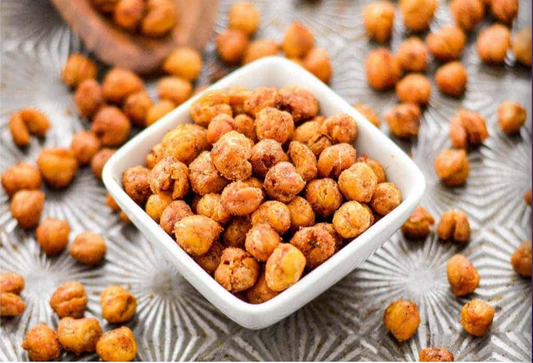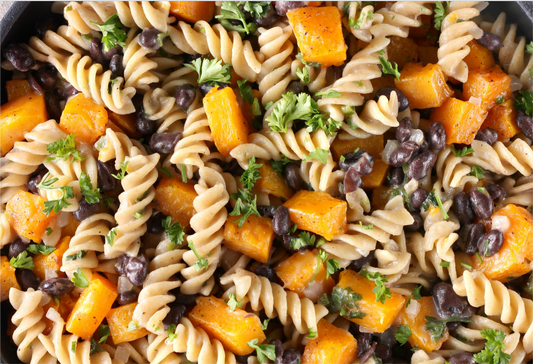Knowing your cycle is not only necessary to know when you will have your period - but it’s also valuable to engage with your cycle for overall health.
When women understand their cycle, they better connect and understand their body. Discovering your body, knowing effects of hormonal fluctuations on your mood, body, and food choices is a powerful ability that enables us to act and perform based on those changes throughout the month.
By reading this blog post you will learn how to eat and train according to 4 phases of your menstrual cycle to have better mood, energy, and training. First of all, let’s have a look at the framework of the menstrual cycle and the 2 main menstrual cycle regulating hormones.
Estrogen and progesterone are 2 sex hormones produced in the female body and they play a role on a healthy menstrual cycle.
Estrogen: Protects connective tissue repair and protects against muscle damage / injury. Also it has an effect on lowering your appetite.
Progesterone: Increases appetite and retains more water in the body than usual. You’re also more prone to develop muscle injury while progesterone levels are high.

Exercise according to your cycle
I know you expect yourself to perform the best in the gym and like to push yourself every single day. However as your hormones fluctuate at each phase of the menstrual cycle, it can be beneficial to really understand your body and how your cycle plays a role in your energy levels and how you feel. Refer to this general guideline to help better understand.
Why is this important? Well, we’re not telling you to switch up your training program every week. That would be difficult. And you know we’re big believers of consistency. So follow a plan and stick to it. However, if you have days where you’re just feeling off, then maybe there’s a reason! And when you understand the reasoning behind things, you can reason with it better and give yourself a break.

Eat according to your cycle
Here are some suggestions that you might what you think about incorporating into your diet! Now, is this the fountain of youth? No. Will it speed up your weight loss process and get you shredded? Probably not. But it might help you feel a little bit better to focus on these clean, high energy foods during your cycle.

Menstrual Phases in Detail
Menstrual Phase (part of Follicular Phase, 1-7 Days)
Nutrition tip: Appetite is normally reduced at this stage in the cycle so eat easy to
digest foods. Your menstrual phase is a time to rest and replenish. Your body is
undergoing an inflammatory response, nourishing yourself with nutrient-dense, high
protein, anti-inflammatory foods will help support you at this time and helps with
recovery. Due to blood loss, iron rich foods are important ( if you’re very deficient might
need to consider taking an iron supplement)
Meal example: Sautéed beef strips ( lean if possible) and a salad filled with iron-rich
spinach and vitamin C rich fruits ( oranges or strawberries) for iron absorption, and
healthy fats ( avocado , olive oil, nuts and seeds).
Exercise Tip: Don’t push hard yourself. Walking, yoga and gentle stretches. Rest as
needed.
Nutrients to consider for Menstrual Phase:
Iron: Beef, beans, molasses, lentils, firm tofu, tuna, eggs, dark-meat turkey
Vitamin C: Bell peppers, strawberries, broccoli, tomatoes, citrus fruit, mango
Vitamin B12: Salmon, yogurt, turkey, chicken, eggs, beef
Omega 3 Fatty Acids: Salmon, cod, mackerel, tuna
Zinc: Turkey, chicken, eggs, nuts, seeds, whole grains, beans, lentils, shellfish
High Fiber Carbohydrates: Sweet potatoes, quinoa, lentils, oats, brown rice, squash
Follicular Phase (1-14 peaks 7-14 Days)
Nutrition Tip: Keep your food choices fresh, colorful, and light! Enjoy a balanced diet,
incorporating plenty of nourishing foods to provide nutrients to a maturing follicle.
Meal example: Broccoli egg frittata is a nutrient dense meal idea which includes B12,
iron, and antioxidants. Nourishing foods are key now to support blood and blood
nourishing foods.
Exercise Tip: Estrogen levels are high and testosterone levels are low during this time.
Due to lower testosterone (low stamina) you can try light cardio. While getting closer to
ovulation ( around day 13-14) you can start increasing your weightlifting weights and
add more volume to training since your testosterone levels are going to increase.
Nutrients to consider for Follicular Phase :
Phytoestrogen Foods: Flaxseeds, pumpkin seeds, berries, grains, garlic, sprouts,
broccoli
Antioxidants: Berries, broccoli, sweet potatoes, carrots, citrus, passion fruit, cauliflower,
brussels sprouts, pomegranate
Fermented Foods: Raw & fermented veggies, yogurt, kefir, miso, tempeh
Cruciferous Veggies: Brussels sprouts, cabbage, cauliflower, kale, bok choy, broccoli
sprouts
Ovulation Phase (usually day 14, for some 14-17 Days)
Nutrition Tip: Focus on anti-inflammatory foods like whole fruits (antioxidant berries) ,
vegetables, and nuts (almonds, walnuts, pistachios).
Meal example: Add pumpkin seeds, walnut, almonds and mixed berries to your
smoothie or oatmeal at breakfast.
Exercise Tip: Your testosterone and estrogen are peaking, especially high testosterone
increases stamina and maximizing your energy. Try exercises such as high-intensity
workouts, consider increasing workout load and weights.
Nutrients to consider for Ovulation:
Fiber: Veggies, whole grains, beans, lentils, nuts, seeds, avocado, berries, apples
Cruciferous Vegetables: Brussels sprouts, cabbage, cauliflower, bok choy, broccoli
sprouts,
Zinc: Turkey, chicken, eggs, nuts, seeds, whole grains, beans, lentils, shellfish
Magnesium: Hempseeds, flaxseeds, almonds, pumpkin seeds, spinach, dark chocolate
Luteal Phase (14-28 Days )
Nutrition Tip: During this phase, focus on liver friendly foods - berries and cruciferous
vegetables. Incorporate fiber to have regular bowel movements since it’s common to
experience constipation before menstruation. Higher progesterone levels during this phase
boosts appetite and you might find yourself craving for comfort foods ( higher in fat and
energy). Your body is likely to retain more water and you might feel bloated that’s why
make sure you’re consuming enough fluid.
Meal example: Pureed soup made with cruciferous vegetables ( broccoli, cauliflower,
brussel sprouts etc.) mixed with bone broth and shredded chicken breast to boost the
protein intake.
Exercise Tip: Higher volume due to higher progesterone and our bodies are not able to
recover it self efficiently and increased body temperature. Focus more on slow strength
training, and moderate intensity yoga training.
Nutrients to consider for Luteal Phase:
Vitamin D: Salmon, mackerel, tuna, egg yolk, mushrooms
Magnesium: Hemp Seeds, flaxseeds, almonds, pumpkin seeds, spinach, dark
chocolate. (help to support water retention and menstrual pain)
Omega 3 Fatty Acids: Salmon, cod, mackerel, skipjack, tuna, halibut . Fights with
inflammation as a result of menstrual cramps.
Vitamin B6: Turkey, lentils, fish, potatoes, banana - Your serotonin production might be
slightly lower during this time which can cause poor mood and increased irritability. B6 is
involved in making serotonin and (GABA) and both help control anxiety and depression.
Eating according to your cycle can be a nourishing way to support your overall and
hormonal health.
Important Note: This blog post does not include any medical advice and only for
informational purposes. Always consider consulting your healthcare provider for
recommendations related to your individual case.




